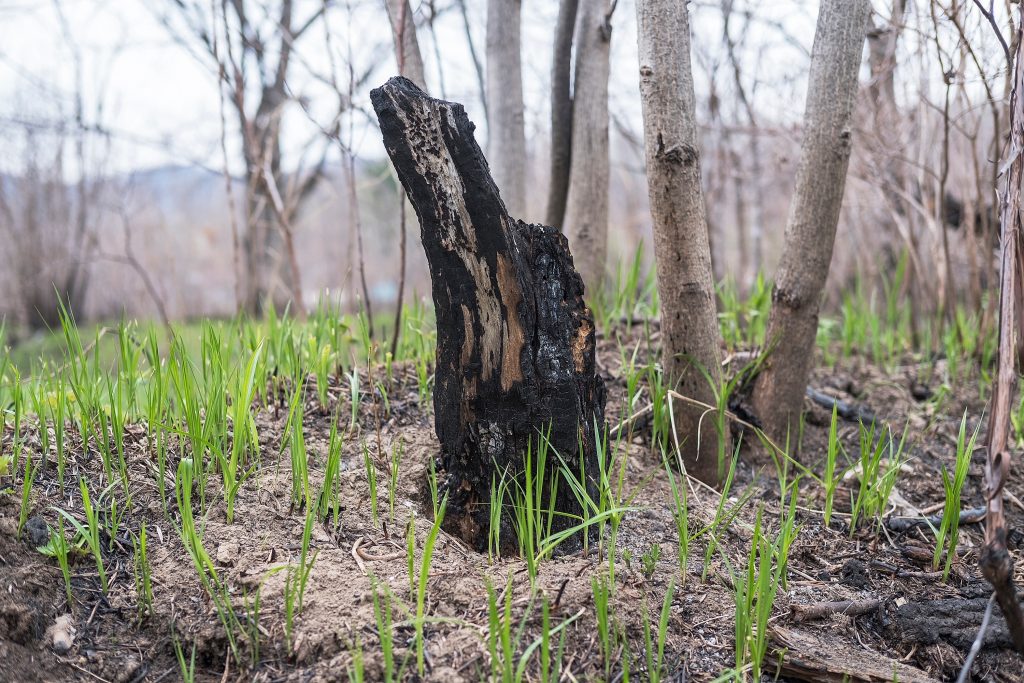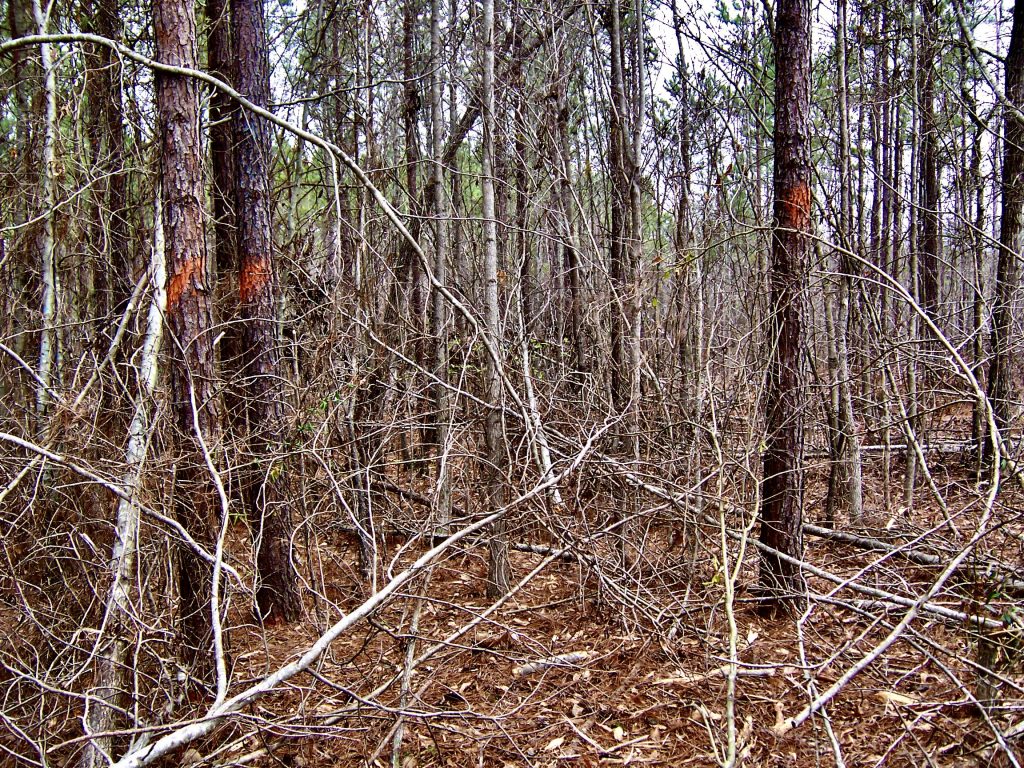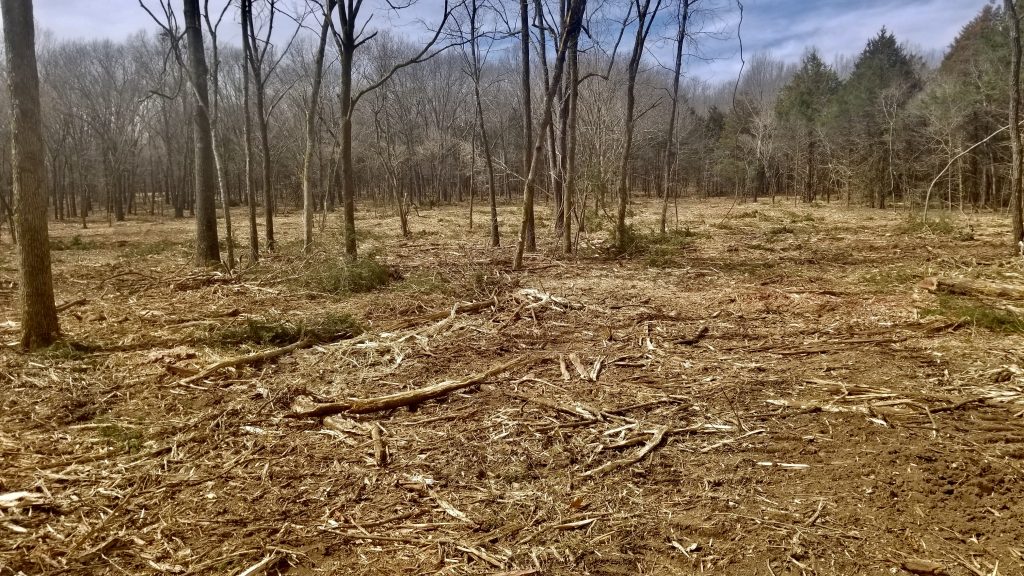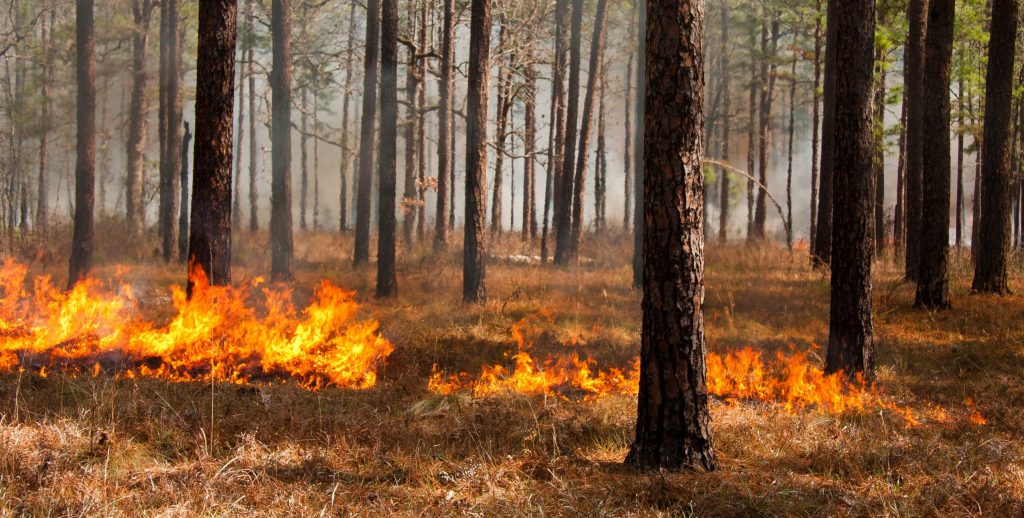The archives of early Spanish explorers, fur trappers and settlers provide a glimpse into the early North American landscape. Their writings describe a diversity of forests and meadows that bore consistent evidence of impact by fire. Early researchers initially thought these fires resulted exclusively from lightning, but early Anthropologists recorded conversations with Native Americans
that documented their intentional use of fire to transform their landscapes. These could be signs of them doing a controlled burn for deer, turkey, and other wildlife.
Early settlers observed neighboring Indians using fire to control brush and weeds and copied their actions for several decades. However, by the late 1800s, prescribed burns were discouraged due to the increasing number of wildfires.
In the 1920s, noted naturalist Herbert L. Stoddard documented the necessity of prescribed burning to enhance bobwhite quail habitat on plantations in Northern Florida and Southern Georgia. Initial opposition to the idea was intense among public agencies and the forest industry. Stoddard became an outspoken advocate of light winter burning in longleaf pine and other woodland settings. Biologists and leaders in forestry eventually accepted Stoddard’s ideas, but they were reluctant to implement or recommend the use of fire as a tool for managing wildlife habitat.

Today, scientists and wildlife managers know that a controlled burn can provide deer, turkeys, quail, and many non-game species with a resurgence of new growth for forage. The openings created by the fire also results in improved nesting sites and travel corridors, among other benefits.
Unfortunately, for both the wildlife and landowners, prescribed burning on private lands is underutilized. This is often due to a lack of knowledge or, in some cases, a fear of the practice. Intentionally setting one’s land on fire is not something to be taken lightly or without proper planning. The property’s location will determine if a controlled burn is a good option for the landowner. Sometimes, the proximity of a parcel of land to highways, population centers, or airports eliminates fire as a management tool. In these cases, there are mechanical options to achieve similar results.
Goals
I spoke with Brian Sheppard of “Brush Clearing Services” (BCS). His company has offices in Georgia and Arkansas, and he offers his expertise and services throughout the South—from Georgia to Texas. I asked him about the controlled burning definition and the role of prescribed burns in managing property for deer and turkey. Sheppard said, “Much of the undesirable undergrowth is eliminated by the fire, and the resulting ash adds nutrients (phosphorus and calcium) to the soil, and new forage quickly emerges. Prescribed burning is probably the most cost-effective way to positively impact a piece of property for wildlife in the shortest amount of time.”
You can listen to an interview with Brian on the Huntin’ Land podcast below.
Sheppard has nearly two decades of experience with controlled burning techniques and habitat restoration for wildlife ranging from deer and turkeys to the endangered red-cockaded woodpecker.
“I’ve worked closely with some of the top biologists and forestry leaders in the country to develop and implement plans for the restoration of wildlife in a wide variety of environments. I’ve coordinated with numerous Government agencies to restore protected wetlands in Alabama, Arkansas, and the Piney Woods region of Texas,” Sheppard said.

“Sometimes, we use a controlled burn in conjunction with targeted tree removal to open the canopy and allow more light to soil contact. If forested areas are too thick, selective cutting before a controlled burn will increase the amount of sunlight, which helps promote the new growth of soft mast species that benefit deer and turkey,” Sheppard added.
“Each property has to be evaluated in light of the owner’s goals and the condition of the property. Most of our prescribed burns are done in the cooler months when weather conditions are more favorable. We use a variety of powerful industrial equipment that can efficiently remove underbrush and create openings through mechanical mulching. Imagine a nine-foot wide stump grinder on tracks,” Sheppard said. “We have a team of licensed and insured forestry mulching technicians that has cleared land throughout the Southeast. Our team also includes experienced arborists who will understand your specific needs and provide solutions that enable you to preserve and enhance your land’s beauty, function, biodiversity, and economic value.”

“Frequently, we recommend a four-step process to achieve the desired results for a property. When we evaluate a parcel, we’re looking at tree density, species, amount/types of underbrush, and the number of openings to determine if we need to incorporate other actions before a planned burn,” Sheppard said.
A comprehensive plan can include:
- Selective harvest
- Use of industrial mulching equipment to create mid-story canopy openings (removing mature, undesirable timber)
- Prescribed burning
- Follow Up with targeted herbicide applications
Benefits Of Controlled Burns
Prescribed burning can benefit deer, turkey, quail, doves, and a variety of non-game species. Whether done specifically for wildlife management or for timber production, burning will increase the yield and quality of browse and create openings for nesting, feeding, and trails.

Studies have also shown that young turkeys benefit from increased insect populations after a fire in burn zones. The resulting ash returns nutrients to the soil and acts as a fertilizer to stimulate the regrowth of various grasses, legumes, and other plants. This new growth is typically more nutritious and palatable and often includes soft-mast species like blackberry and pokeweed.
Preparation
The first step in preparing for a prescribed burn is to consult with a trained professional to create a detailed burn plan. In some states, your state forestry or wildlife agency may be able to offer advice. The written burn plan will contain:
- The burn area’s size and boundaries
- Current habitat conditions
- Fuel load
- Any potential safety issues
- A map to highlight all safety concerns, firebreaks, and any smoke-sensitive areas
- Manpower and equipment requirements
- Tools and Personal Protective Equipment

Weather
The plan should include the ideal weather conditions necessary before starting your particular burn. Factors such as temperature, barometric pressure, wind direction/speed, and relative humidity all come into play when planning.
“Always coordinate your projects with licensed, registered, and insured burn specialists to ensure the safety, timing, and success of your prescribed burn,” Sheppard cautioned.
Safety
Anyone working within the burn area should have leather boots and gloves and wear clothing made of cotton or wool rather than synthetic fiber. Good communication is vital, and the plan will include ways to relay information in real-time effectively. A good plan will also address the number of people and equipment needed for your burn project. It will calculate the personnel required, their placement/ responsibilities and list the necessary tools, equipment, and safety items needed to carry out a safe, effective burn operation.
Final Thought
The early North American Indians learned that fires created by lightning changed their landscape and benefitted both humans and nature. They saw how fire impacted the land and produced new growth and forage.
Fast forward, and many wildlife managers have discovered those same benefits as well. Prescribed fire is not right for every situation, but if your primary focus is on wildlife and you’re in an area where it’s safe to burn, then a controlled burn for deer and turkey may be the perfect tool for improving your land.

If your location is not suitable for prescribed burning then contact Brian Sheppard at Brush Clearing Services. He can answer any questions about wildlife restoration using his expertise and specialized industrial machinery.
Contact Information
Brian Sheppard
Office 706-663-8076
Direct 706-718-1690




